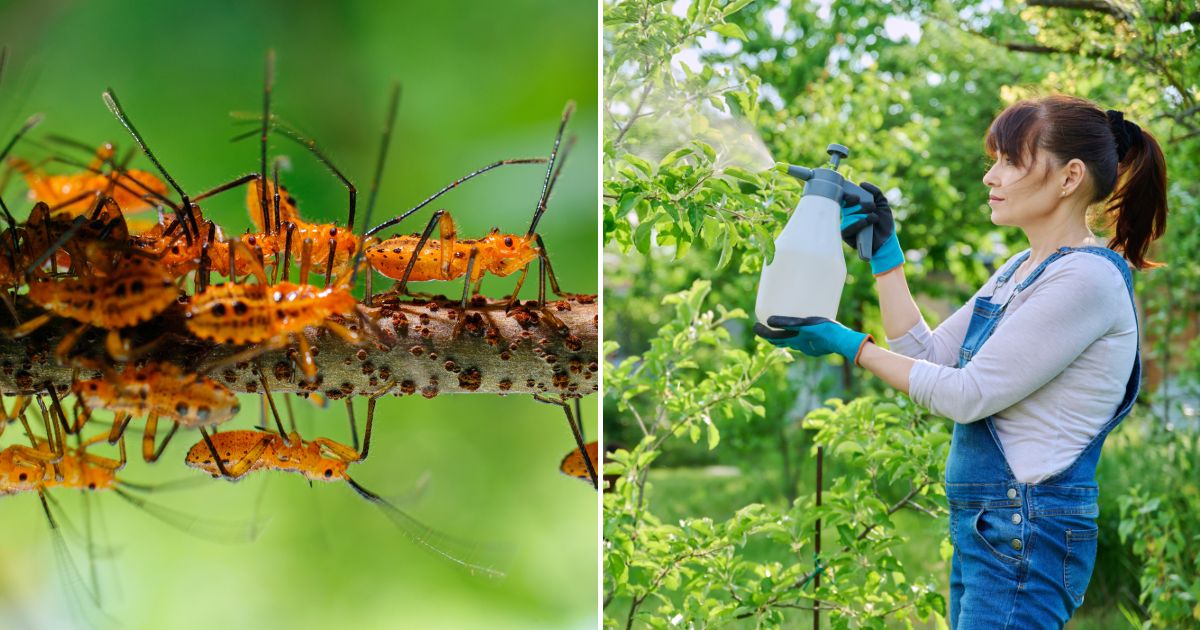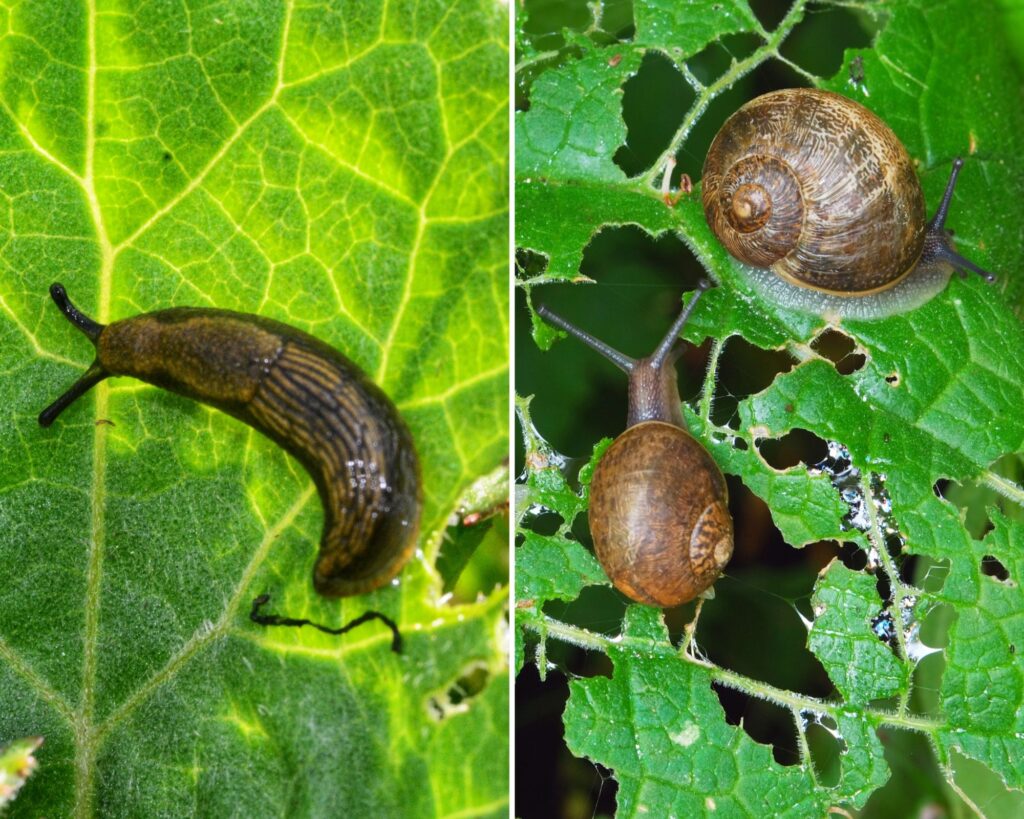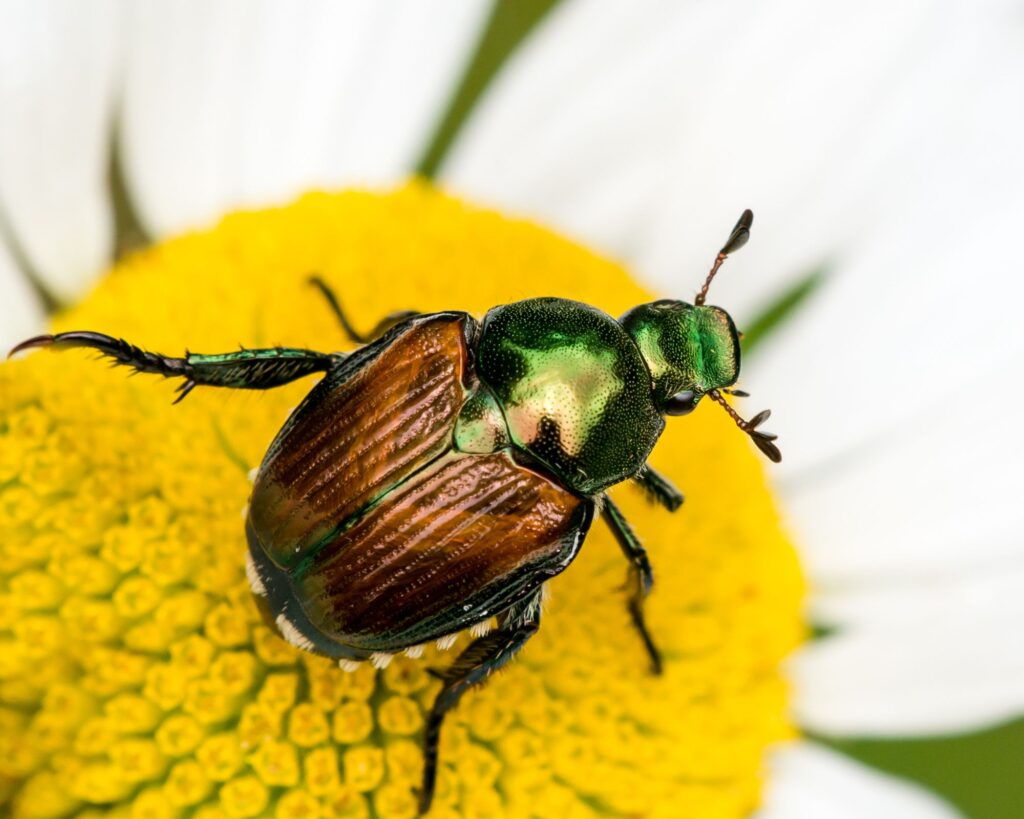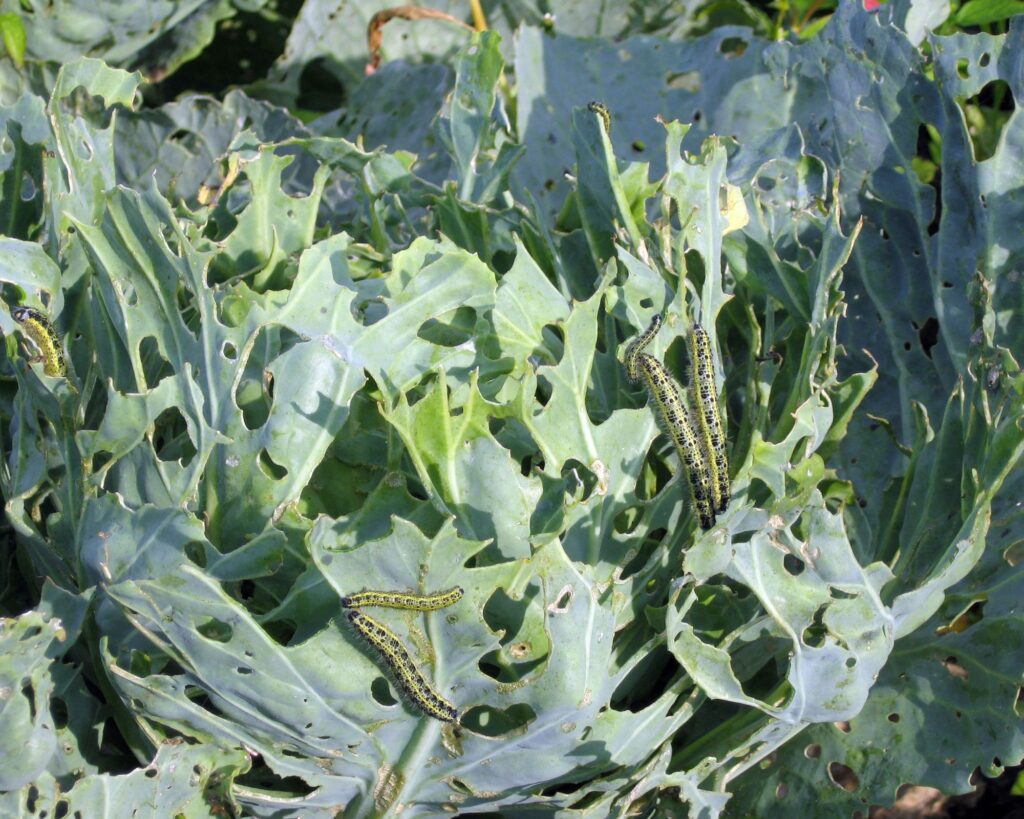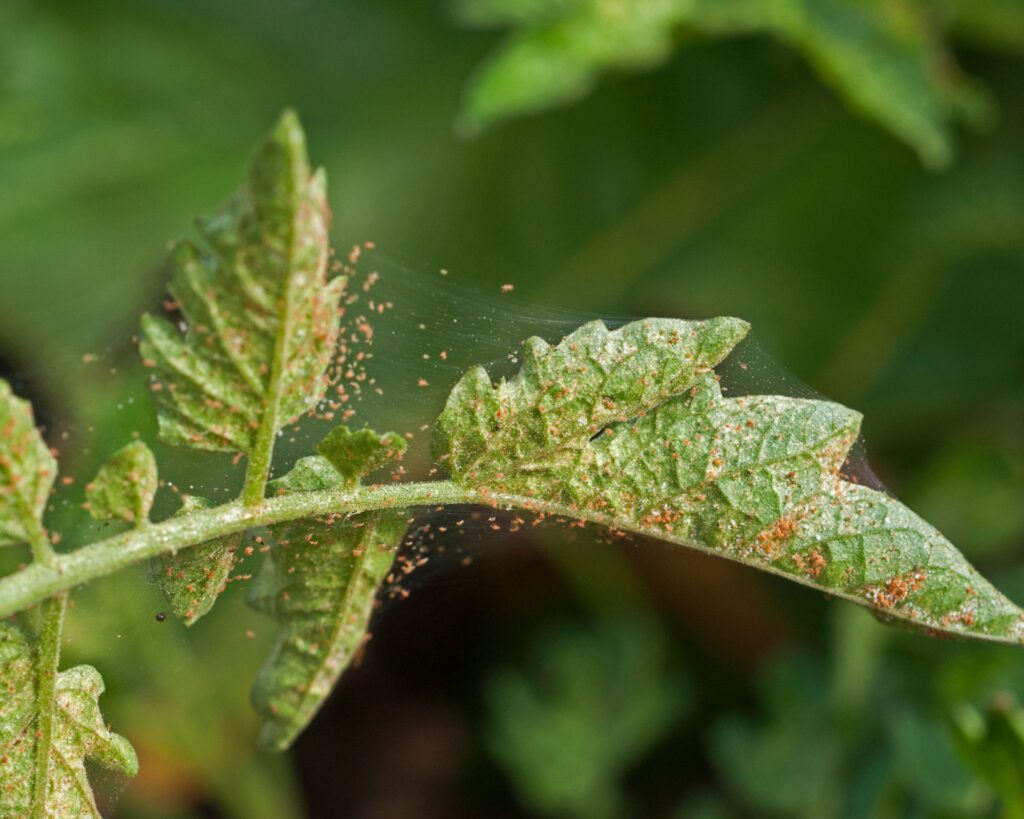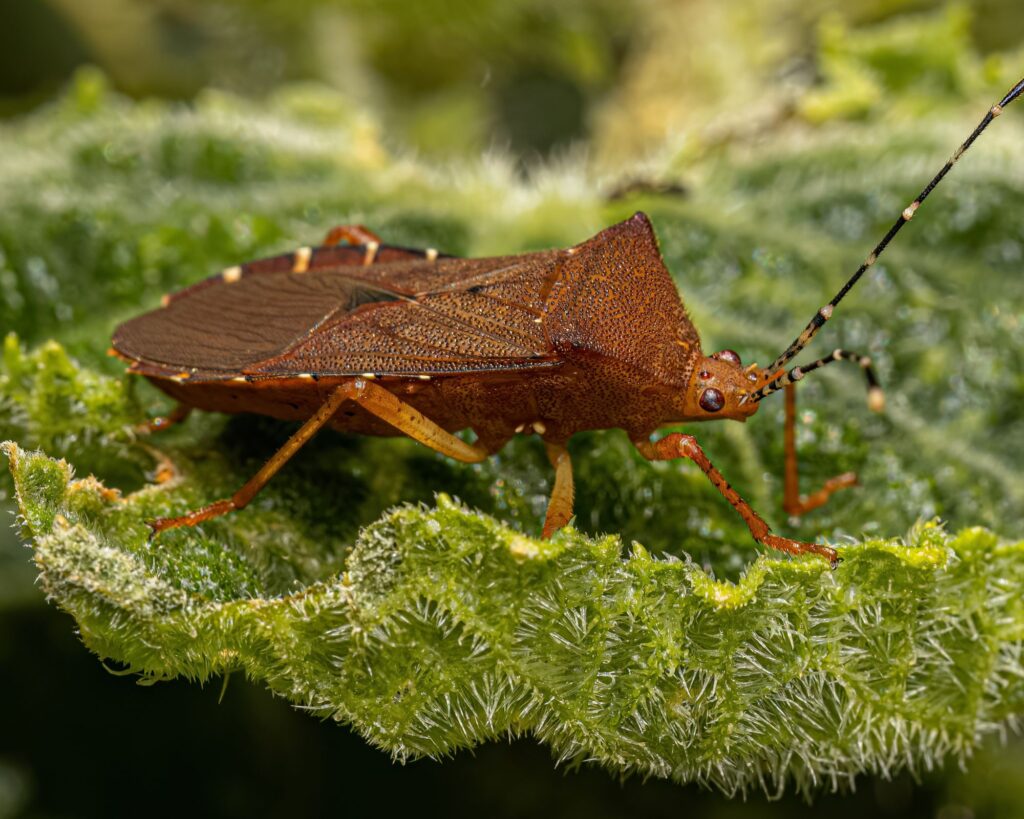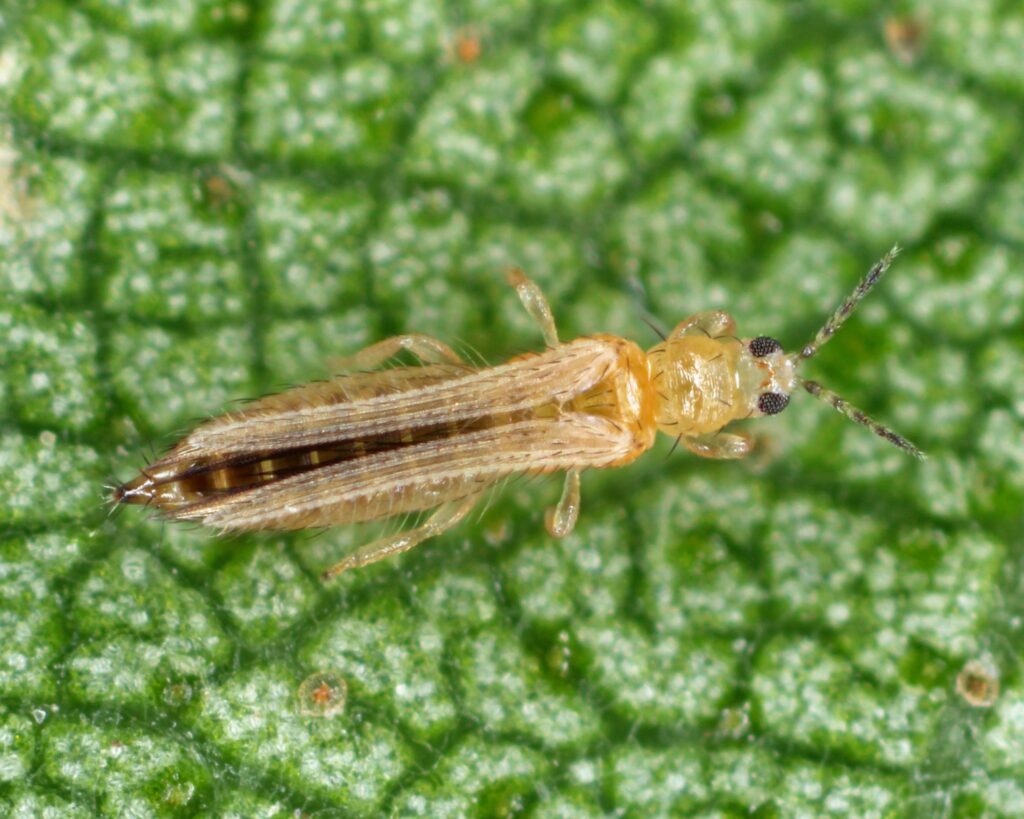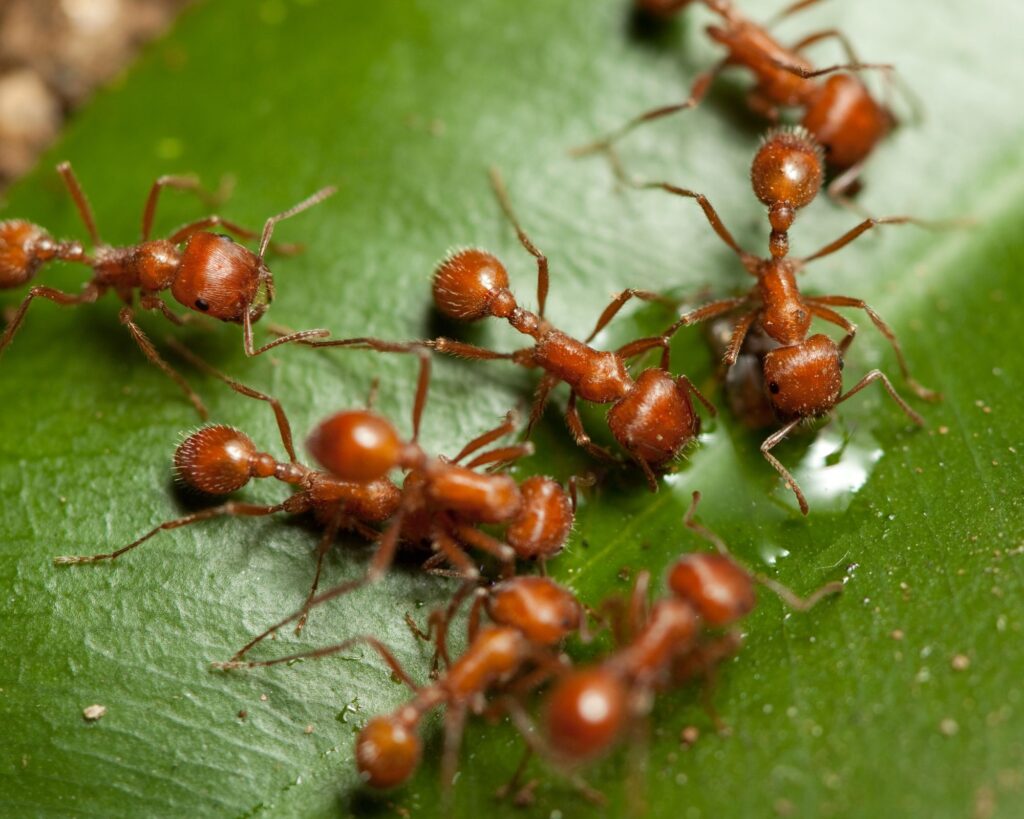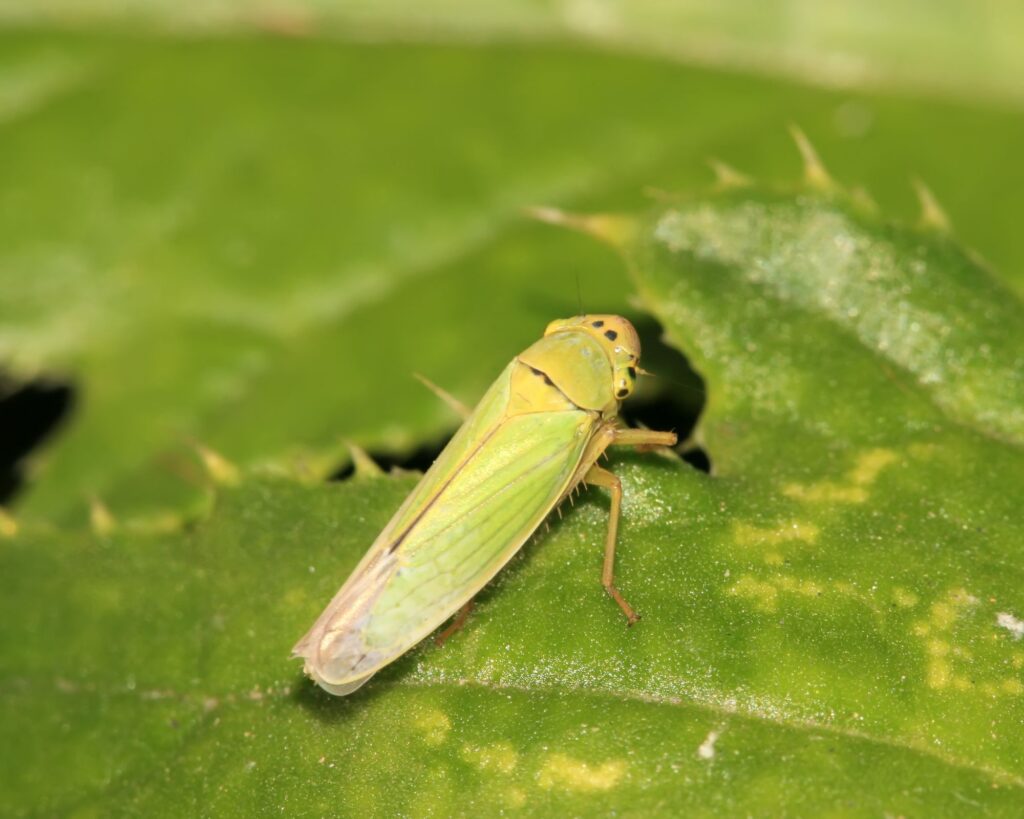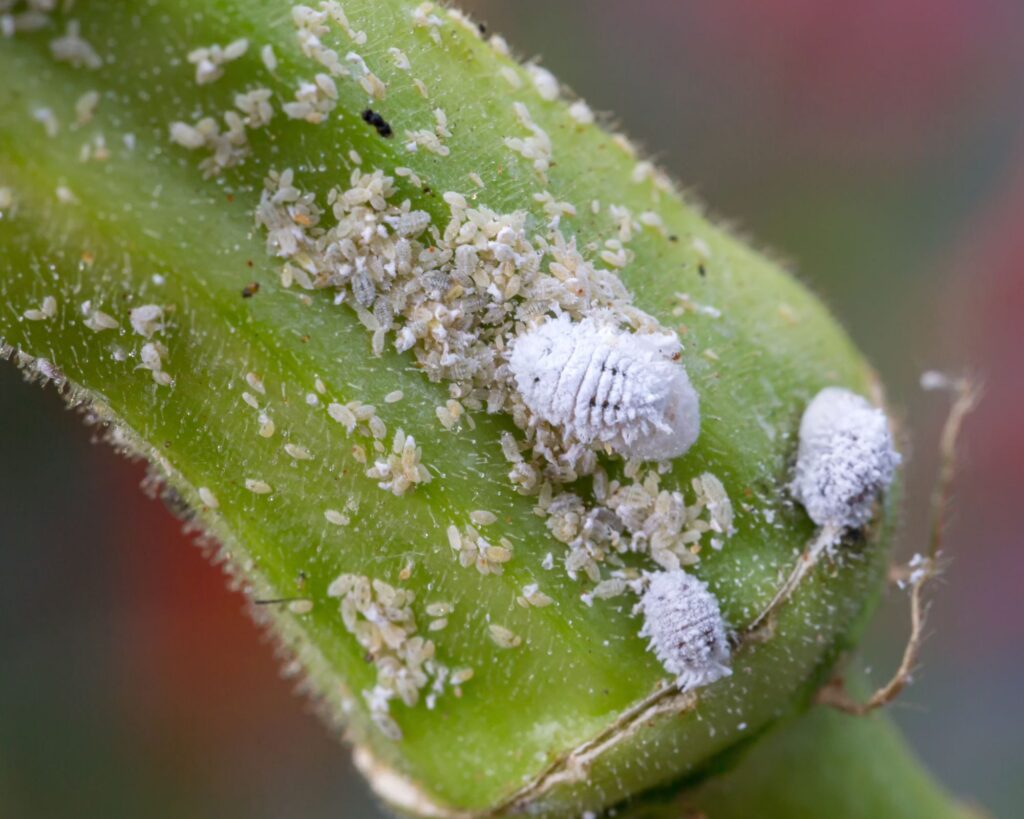You’ve spent hours nurturing your garden, but all it takes is a swarm of pests to undo your hard work.
Imagine waking up to find your once-thriving plants riddled with holes and wilting leaves – disaster, right? Fortunately, identifying the worst offenders and knowing how to tackle them is key to keeping your garden lush and healthy.
In this guide, we’ll walk you through the top 10+ garden pests and give you practical, easy-to-apply solutions to protect your plants. Ready to outsmart these tiny invaders?
1. Aphids
Description: Aphids are small, soft-bodied insects that come in green, black, brown, or yellow. They cluster on new plant growth, sucking sap and causing leaves to curl, yellow, or distort.
Signs of Infestation: Curling leaves, sticky residue (honeydew) on plants, and sooty mold growth.
How to Get Rid of Aphids:
- Spray with water: A strong blast of water can dislodge aphids from plants.
- Introduce beneficial insects: Ladybugs, lacewings, and parasitic wasps are natural predators.
- Use insecticidal soap: Apply insecticidal soap directly to aphid clusters to kill them.
2. Slugs and Snails
Description: Slugs and snails are nocturnal creatures that feed on plant leaves, especially tender new growth. They leave behind irregular holes and slimy trails.
Signs of Infestation: Large ragged holes in leaves and a silvery slime trail on plants and soil.
How to Get Rid of Slugs and Snails:
- Handpick them: Go out at night with a flashlight and remove slugs and snails by hand.
- Set up beer traps: Slugs are attracted to beer, so bury a shallow container filled with beer at soil level to trap them.
- Copper tape: Surround your plants with copper tape, which creates an unpleasant sensation for slugs and snails.
3. Japanese Beetles
Description: Japanese beetles are metallic green insects with copper-colored wings. They feed on over 300 species of plants, skeletonizing leaves and damaging flowers.
Signs of Infestation: Skeletonized leaves, reduced plant vigor, and visible beetles.
How to Get Rid of Japanese Beetles:
- Handpick them: In the early morning, when they’re sluggish, handpick beetles off plants and drop them into soapy water.
- Use neem oil: Neem oil sprayed on affected plants can reduce beetle feeding.
- Set up traps: Use Japanese beetle traps placed away from your plants to draw them away from your garden.
4. Cabbage Worms
Description: These green caterpillars are the larvae of small white butterflies. They primarily attack brassicas such as cabbage, broccoli, and cauliflower, chewing large holes in leaves.
Signs of Infestation: Ragged holes in leaves, visible green worms, and butterfly activity around plants.
How to Get Rid of Cabbage Worms:
- Handpick worms: Check under leaves and remove worms by hand.
- Use row covers: Floating row covers can prevent butterflies from laying eggs on plants.
- Apply Bacillus thuringiensis (Bt): Bt is a natural bacterial insecticide that targets caterpillars without harming other insects.
5. Spider Mites
Description: Spider mites are tiny arachnids that feed on plant sap, causing speckled discoloration on leaves. They thrive in hot, dry conditions and can quickly multiply, weakening plants.
Signs of Infestation: Tiny yellow or white speckles on leaves, webbing on plants, and leaf drop.
How to Get Rid of Spider Mites:
- Spray with water: A strong spray of water can dislodge mites from plants.
- Introduce predatory mites: These natural predators can help keep spider mite populations in check.
- Use neem oil or insecticidal soap: Both are effective at killing spider mites when applied directly.
6. Whiteflies
Description: Whiteflies are small, white-winged insects that feed on the undersides of leaves, causing plants to weaken, turn yellow, and drop leaves prematurely. They also excrete honeydew, which leads to the growth of sooty mold.
Signs of Infestation: Tiny white insects flying around when plants are disturbed, sticky honeydew, and yellowing leaves.
How to Get Rid of Whiteflies:
- Use yellow sticky traps: Whiteflies are attracted to the color yellow and will get stuck on these traps.
- Spray insecticidal soap: Apply insecticidal soap to the undersides of leaves to kill whiteflies on contact.
- Introduce natural predators: Ladybugs and lacewings feed on whiteflies and can help control populations.
7. Cutworms
Description: Cutworms are the larvae of moths and are notorious for cutting off seedlings at soil level during the night. These fat, grayish-brown caterpillars can decimate young plants overnight.
Signs of Infestation: Plants mysteriously cut off at the base, often lying on the ground.
How to Get Rid of Cutworms:
- Use collars around seedlings: Place a collar made from cardboard or plastic around the base of each plant to prevent cutworms from reaching the stem.
- Handpick at night: Search for cutworms in the evening and remove them by hand.
- Diatomaceous earth: Sprinkle diatomaceous earth around plants to create a barrier that damages cutworms as they crawl over it.
8. Squash Bugs
Description: Squash bugs are shield-shaped brown insects that feed on the sap of squash and pumpkin plants, causing wilting, yellowing, and death of leaves.
Signs of Infestation: Yellowing or wilting leaves, clusters of small bronze eggs on the underside of leaves, and visible adult bugs.
How to Get Rid of Squash Bugs:
- Handpick bugs: Remove adult squash bugs and their eggs from plants.
- Trap them under boards: Place boards near affected plants, and squash bugs will hide underneath them at night, making them easy to collect in the morning.
- Apply neem oil: Spray neem oil on plants to disrupt the squash bug life cycle.
9. Thrips
Description: Thrips are tiny, slender insects that suck the juices from flowers, leaves, and fruits. They leave behind silvery or bronzed spots and can distort plant growth.
Signs of Infestation: Silvery streaks or spots on leaves, distorted plant growth, and stunted flowers or fruit.
How to Get Rid of Thrips:
- Use blue sticky traps: Thrips are attracted to the color blue and will be trapped on sticky surfaces.
- Spray insecticidal soap or neem oil: Both treatments can kill thrips on contact.
- Introduce predatory insects: Minute pirate bugs and lacewing larvae are natural predators of thrips.
10. Ants
Description: While ants themselves may not directly damage plants, they farm and protect aphids, scale insects, and other pests that do. Ants can also disturb the soil around plants, affecting their roots.
Signs of Infestation: Ant trails leading to plants, aphids or other sap-sucking insects present, and disturbed soil around roots.
How to Get Rid of Ants:
- Destroy aphid colonies: Removing aphids and other pests will reduce the ant population.
- Diatomaceous earth: Sprinkle around plants to deter ants.
- Boiling water: Pour boiling water directly onto ant nests to eliminate colonies.
11. Leafhoppers
Description: Leafhoppers are small, wedge-shaped insects that jump when disturbed. They feed on plant juices, causing stippling, yellowing, and stunted growth.
Signs of Infestation: Yellowing or stippled leaves, curled or distorted foliage, and visible leafhoppers on plants.
How to Get Rid of Leafhoppers:
- Use floating row covers: Prevent leafhoppers from reaching plants by covering them with row covers.
- Insecticidal soap: Spray plants with insecticidal soap to kill leafhoppers on contact.
- Encourage beneficial insects: Parasitic wasps and ladybugs prey on leafhoppers.
12. Mealybugs
Description: Mealybugs are small, white, cotton-like insects that feed on plant sap, causing stunted growth and yellowing of leaves. They often appear in clusters on the stems and undersides of leaves.
Signs of Infestation: White cottony clusters, yellowing leaves, and a sticky substance (honeydew) on plants.
How to Get Rid of Mealybugs:
- Hand remove: Use a cotton swab dipped in rubbing alcohol to remove mealybugs from plants.
- Introduce natural predators: Ladybugs and parasitic wasps can help control mealybug populations.
- Use neem oil or insecticidal soap: Both treatments are effective against mealybugs.
